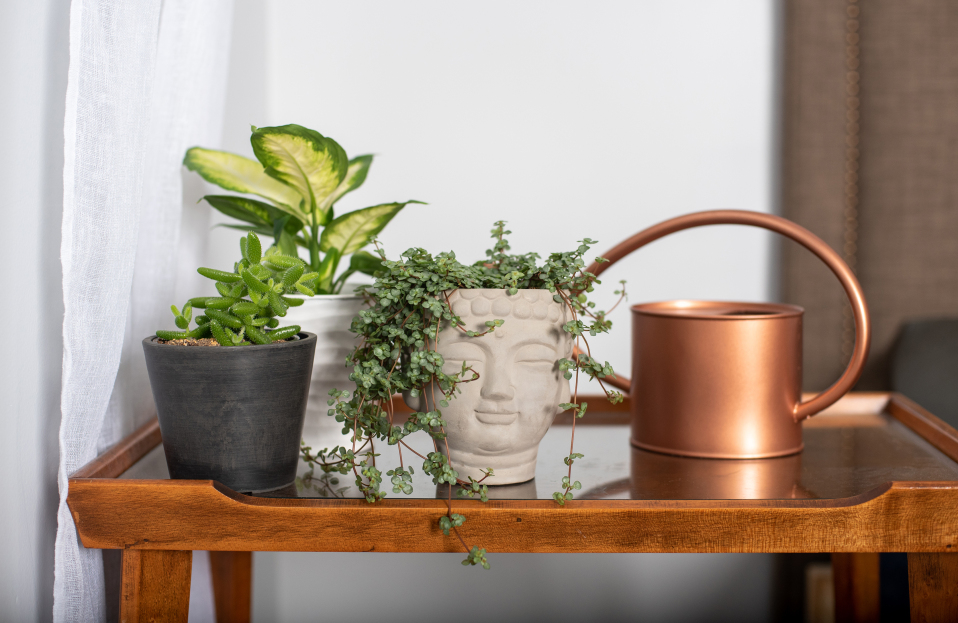
With school starting again soon and fall just around the corner, now is the perfect time to head out and find some new plants to help decorate your new living space. We hope you fall in love with these petite plants, curated by our experts!
According to a study by Texas A&M University: "Keeping ornamental plants in the home and in the workplace increases memory retention and concentration... Studies show that tasks performed while under the calming influence of nature are performed better and with greater accuracy, yielding a higher quality result. Moreover, being outside in a natural environment can improve memory performance and attention span by twenty percent."
Also sometimes known as “Silver Sparkle Pilea” or “Pilea Glauca,” this delightfully dainty plant gets its name from its tiny blue-grey leaves that sparkle in the sunlight. The stems of this pilea tend to trail downward, making this plant perfect for hanging baskets or for cascading down tall shelves. As it grows, you may choose to pinch its stems to maintain its compact appearance, or let it grow free.
Bonus: Plants of the Pilea genus are known to be non-toxic to house pets, including cats and dogs.
Light level: Bright light.
Watering: Water regularly. Keep soil moist, but not saturated.
Unlike most other cacti, Dragon Fruit plants have spines that are soft and flexible to the touch, making them perfect for high traffic areas in small spaces. Although Dragon Fruit plants can grow quite large in the wild, container grown plants grown from seeds are slow growers and will remain compact for a long time.
Bonus: The uniqueness of this petite, “huggable” cactus makes a great conversation starter!
Light level: Place in a light shaded to bright environment.
Watering: Water more frequently than other cacti (approximately once every 2 weeks). Allow soil to dry between waterings.
Can a pickle be cute? This “dill-ightful” compact plant gets its name from its softly bristled pickle-shaped leaves. With gentle care, it can produce small, daisy-like yellow flowers. We think this plant gives new meaning to the phrase, “Cool as a cucumber.”
Bonus: The succulent leaves of this plant hold lots of moisture, making it drought-tolerant.
Light level: Bright light.
Watering: Allow soil to dry between waterings.
Succulents are a tried-and-true staple of dorms and other small spaces. They are the perfect starter plant for any beginner, but also appeal to experienced plant parents and collectors because they come in so many different shapes and colours. Succulents almost thrive on neglect, which is perfect for when you forget to water them during exam time, or leave them at home during spring break.
Bonus: Very easy to care for. Can stand not being watered for several weeks.
Light level: Bright light.
Watering: Allow soil to dry between waterings.
These resilient, easy-to-grow plants (sometimes also called "mother-in-law's tongue") can tolerate a variety of lighting conditions including indirect light and partial shade, making them very versatile. Some snake plant varieties can grow quite tall, but others like sansevieria trifasciata, sansevieria fernwood, sansevieria cylindrica, or sansevieria boncel starfish will remain compact for a long time if bought small and container grown indoors.
Bonus: In a study by NASA, Snake Plants have been shown to be powerful air purifiers, capable of removing toxic volatile organic compounds (VOC's) from indoor environments.
Light level: Bright indirect sunlight, or partial shade.
Watering: Allow soil to dry between waterings.